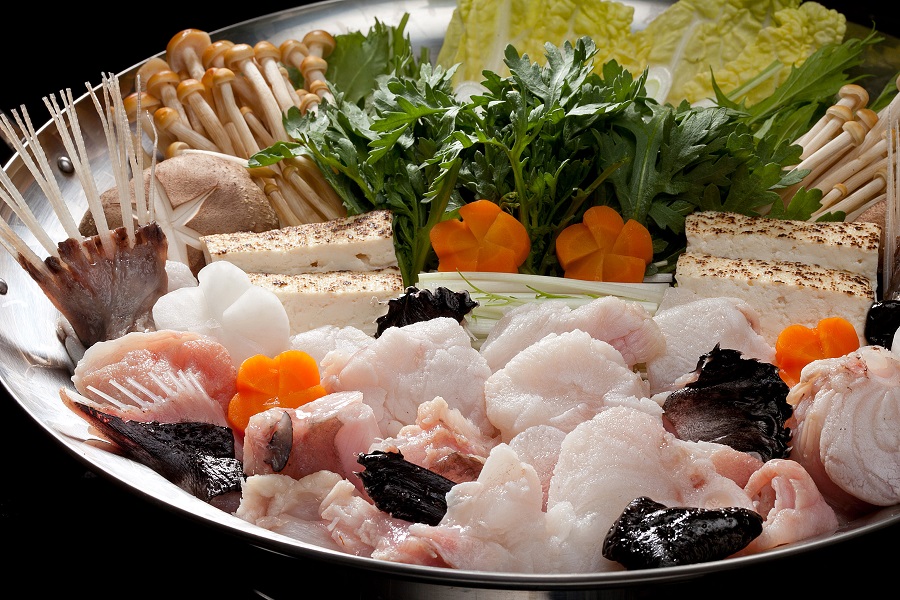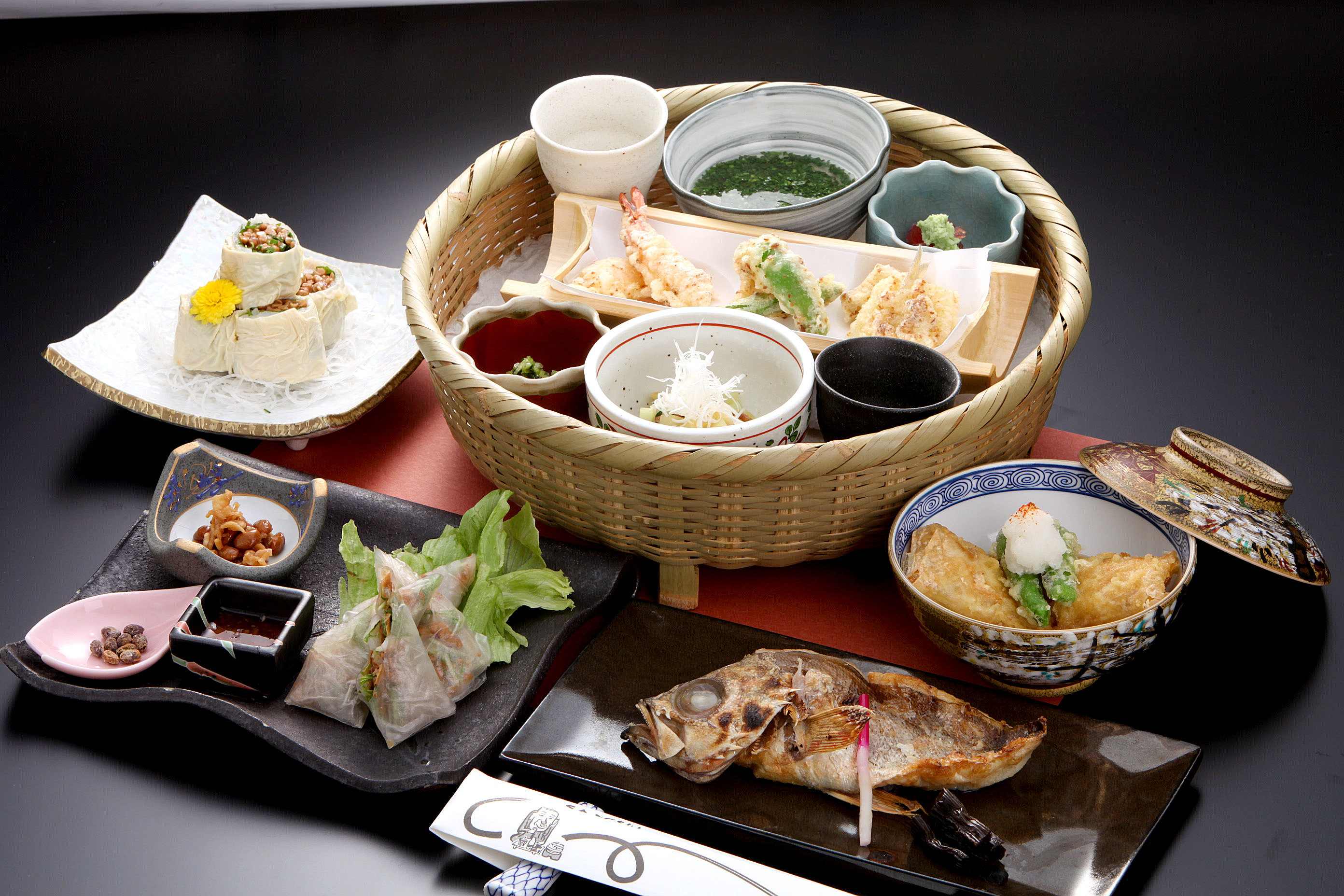5 Foods to Try in Ibaraki: Melon, Hitachi Beef, Dried Sweet Potatoes, and More!
Food
2022.12.05

Ibaraki Prefecture is blessed with many fantastic foods, such as fruits, wagyu beef, and fresh seafood! We will introduce five specialties you should try when you come to Ibaraki, how to eat them, and recommended restaurants.
Ibaraki: A Treasure Trove of Tasty Food
Ibaraki boasts the third-highest agricultural production in Japan. The prefecture produces various agricultural and animal products due to its mild average annual temperatures that range between 13℃ to 14.5℃. It also faces the Pacific Ocean so is blessed with fresh seafood.
This article introduces five popular products that embody the flavors of Ibaraki!
Boasting the Highest Production in Japan! Melon (Season: April to October)

Melons come to mind first when talking about fruit in Ibaraki. The prefecture’s production is the highest in Japan and has consecutively held this position for over 20 years!
Various melons can be enjoyed for an extended period year-round, except in winter months. Andes Melons and Quincy Melons are in season from spring to early summer. Likewise, Earls Melons are in season from summer to autumn.
The melon variety currently in the spotlight is the Ibaraking, short for Ibaraki King (in season from May to June). This Ibaraki melon brand was created after ten years of testing and crossbreeding over 400 combinations of melons before finding the perfect one!
Some features include the melon’s pulp being 10% larger than other seasonal varieties and the high-quality sweetness.
Recommended Way to Eat Ibaraki Melons
 Picture courtesy of Fukasaku Farm
Picture courtesy of Fukasaku Farm
Once cut, Ibaraki melons can be eaten and taste incredibly delicious. However, with a little ingenuity, the variety of flavors can be further enhanced.
For example, it tastes excellent with dry-cured ham to enjoy the sweet and salty flavors. “Brandy melon” is another unique method gaining popularity these past few years! This recipe is made by cutting melons in half, removing the seeds, then pouring brandy over the fruit.
This fruit is worth trying in various sweet combinations such as smoothies, parfaits, or kakigori (*). Ibaraki is home to numerous cafes serving kakigori made with melon slices and juice.
*Kakigori: a Japanese summer dessert made with shaved ice and topped with syrup, fruit juice, and fruit slices.
Recommended Spot: Fukasaku Farm
 Picture courtesy of Fukasaku Farm
Picture courtesy of Fukasaku Farm
The city of Hokota boasts the largest melon production out of all municipalities in Ibaraki. It is also home to several places where you can enjoy melon picking.
One of our recommended spots is Fukasaku Farm, which has been in business for over 100 years throughout six generations, in Hokota. The farm has earned several national and international awards for its agricultural produce.
You can pick your favorite among many ripe melons in the greenhouse during the melon-picking experience (temporarily closed as of October 2022 due to COVID-19).
There are also a few stores located on the farm grounds. You’ll even find the world’s first-ever Baumkuchen specialty store operated by farmers. There’s also a cafe and dessert shop offering sweets made with seasonal fruits harvested on the farm.
Information

Fukasaku Farm
Fukasaku Farm in Ibaraki is a popular destination for visitors looking to enjoy fresh fruit. The farm is well-known for its seasonal fruit-picking experiences, such as sweet melons and strawberrie…
See MoreHitachi Beef: The Highest Quality Wagyu Beef! (Season: Year-Round)

Wagyu beef is now one of the most popular ingredients in the world.
There are numerous types of wagyu beef available. Hitachi beef is an excellent one from Ibaraki Prefecture, where cattle farming has been practiced for over 180 years. The meat quality is typically a grade 4 or 5, while its yield (*), the edible meat ratio, is a grade A or B. It truly is the highest-grade wagyu beef brand in Japan!
Hitachi beef belongs to the Japanese Black cattle family and is characterized by fine marbling. It produces “good” fat thanks to the mineral-rich feed given to the cattle. Give this tender melt-in-your-mouth meat a try!
*The quality and yield of wagyu meat grade: meat quality grade ranges from 1 to 5, with five being the highest. Yield grade ranges from A to C, with A being the highest.
Recommended Way to Eat Hitachi Beef
 The Hitachi Beef Lunch, a popular menu item at Restaurant Iijima
The Hitachi Beef Lunch, a popular menu item at Restaurant Iijima
Do give this beef a try in staple dishes such as steak or beef stew. Other options include shabu-shabu (hot pot) and sukiyaki for uniquely Japanese dishes.
Recommended Spot: Restaurant Iijima

Restaurant Iijima specializes in premium meat and is managed by Niku no Iijima, an established butcher shop. They have won countless awards from international trade fairs for meat processing, including IFFA. Enjoy various dishes made with Hitachi beef and pair your meal with wine as recommended by the restaurant’s manager-cum-sommelier.
Information

Restaurant Iijima
This restaurant is run directly by Iijima Butchers and specialises in premium beef including Hitachi Wagyu Beef. Iijima was first opened in 1979 and the quality of both food and service has kept ceme…
See MoreDried Sweet Potatoes: An Addictive Natural Sweetness! (Season: November to March)

Hoshi imo, or dried sweet potatoes, is a traditional Japanese sweet made by steaming sweet potatoes, then drying them under the sun. Ibaraki produces the largest amount of hoshi imo in Japan due to its suitable soil and climate for growing sweet potatoes.
No additives or sugar are added when making hoshi imo. In other words, you can enjoy its natural sweetness! It’s also an appealing healthy snack because it’s rich in dietary fiber and minerals.
Recommended Way to Eat Dried Sweet Potatoes

While you can enjoy hoshi imo on its own, it pairs amazingly well with drinks like tea or milk!
You can also enjoy it in takikomi gohan (mixed rice) by cooking the hoshi imo on top of the rice. Several unique snacks and confections are available in Ibaraki, like hoshi imo pie, cheesecake, and gelato topped with generous amounts of hoshi imo paste!
Recommended Spots: Lapoppo Namegata Farmers Village and Hoshiimo Shrine

Ibaraki citizens love and take pride in their dried sweet potatoes! No wonder several spots in the prefecture are dedicated to hoshi imo and sweet potatoes in the prefecture.
Lapoppo Namegata Farmers Village, a farming experience theme park opened on the grounds of a former renovated school, is one of these spots. It’s a unique location with a factory museum where you can view the history and experience the charms of roasted sweet potatoes. You can also see the world’s first tunnel oven, specially made for roasting sweet potatoes, which is 19 meters in length!
 Hoshiimo Shrine’s golden torii gates
Hoshiimo Shrine’s golden torii gates
Hoshi imo, in Japanese, is phonetically similar to “hoshii mono,” which means “something that you want.” Hoshiimo Shrine is a spiritual spot in Ibaraki that is said to bless visitors with the ability to obtain everything that they desire.
Information

Lapoppo Namegata Farmers Village
Namegata Farmers Village is a park and shop in a renovated school building just an 80-minute drive from Tokyo. The overarching concept at the park is "farm to table." Therefore, visitors can eat, exp…
See MoreInformation

Hoshiimo Shrine / Horide Shrine
Horide Shrine and Hoshiimo Shrine are on a hill with a beautiful view of Ajigaura Beach. The name Horide comes from "horidasu," or the Japanese verb for "to dig out." In 1663, locals unearthed armor,…
See MoreAnglerfish: A Winter Food Great for Your Skin! (Season: November to March)

Anko (anglerfish) is a distinct-looking deep-sea fish without scales that is soft and flabby. Despite its looks, it was considered a high-class food that would be presented as a gift by Ibaraki daimyo (feudal lords) to the shogun during the Edo Period (1603-1868).
The fish meat is soft and has a light flavor. Parts of its body, such as the liver, stomach, and skin, are characterized as being highly elastic in texture. You might be slightly taken aback by its unique flavor and smell if it’s your first time tasting it. However, anglerfish is excellent for health! Fishers also know it as a nutrition-rich food that boosts stamina. Recently, the ingredient has gained popularity among beauty-conscious people because it’s full of collagen that keeps the skin looking healthy. It’s also rich in vitamins and low in fat and calories.
Anko is in season from November to March. It tastes even more exquisite between December and February as the liver grows fatty, giving it the nickname “foie gras of the sea.”
Recommended Way to Eat Anglerfish

The main feature of anko is that almost all of the fish can be cooked to eat. You can thoroughly enjoy different textures and flavors depending on how it’s prepared. This includes cooking it as a hot-pot dish (nabe), deep-fried as karaage, or seasoned with vinegar.
Recommended Spot: Oarai Hotel
Anko dishes are served at Oarai Hotel from November to March. Moreover, you can watch the anko-cutting show every day during this season.
Because anko is soft and flabby, it is difficult to prepare and cook at home. That’s why it’s a valuable experience to see this unique form of anko-cutting in which the fish is hung and sliced.
Information

Oarai Hotel
Located on the Oarai Coast, this hotel boasts stunning views of the Pacific Ocean from the guest rooms. The meals also feature freshly-caught seafood. There are plenty of attractions to visit year-…
See MoreNatto: A Must Try at Least Once in Japan (Season: Year-Round)

Natto is a healthy food that has supported the longevity of Japanese people for centuries. It is said to have existed as early as the Yayoi Period (around the 10th century BCE – 3rd century AD). Natto is fermented soybeans rich in vitamins and proteins perfect for health-conscious people, such as vegans. Since it’s fermented, many people either love it or hate it because of the unusual taste, smell, and appearance. However, some get hooked on the taste and eat it daily!
Natto is a famous Ibaraki specialty, with several natto factories in the prefecture. Takano Foods—the manufacturer that produces Okame Natto, the most renowned natto brand in Japan—is also located here.
Recommended Way to Eat Natto

The traditional way to eat natto is mixing it with chopped green onions, then adding it over rice. Other ways include mixing it with egg or kimchi or spreading it on toast. There’s also soft serve ice cream garnished with natto, a peculiar combination even in Ibaraki!
Recommended Spot: Sansui

Sansui is a regional cuisine restaurant in Mito. They serve dishes such as Natto Tempura (deep-fried natto and vegetables) and Natto Kaiseki, a summer exclusive where guests can enjoy a variety of natto dishes in one meal. Their anglerfish hot pot is also popular.
Information

Sansui
Sansui offers a range of Ibaraki local specialties such as anglerfish hotpot, natto (fermented soybeans), and Okukuji shamo wildfowl dishes. Kamameshi, individual pots of rice simmered with seasonal…
See MoreMany More Local Specialties to Try!
 Hitachi Aki Soba
Hitachi Aki Soba
Ibaraki has a lot of specialties to try, such as Okukuji Shamo chicken, chestnuts, Hitachi Aki soba (buckwheat) noodles, and so many others! Make a trip to Ibaraki to taste all of these delicious foods!






